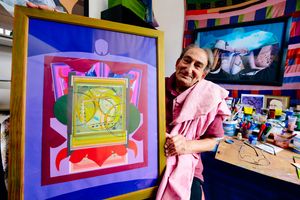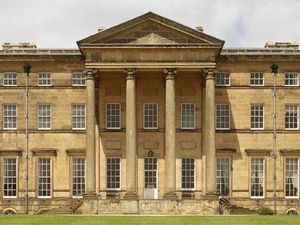Home is where the art is for virtuoso Malcolm
Creative inspiration can come from the most unlikely of sources. For Malcolm Tillis, it was in an old tea chest he bought for a few pounds in a second-hand furniture auction.

"I had just come back to Britain after living abroad, and needed some furniture," he recalls.
"I bought this old tea chest in an auction for about £4, and it had some old cork tiles in it. I hate seeing anything wasted, so I used it to create some art work."
That was in 1984, and that discovery in an old tea chest led to a new chapter in Malcolm's already colourful artistic career. It has also brought him international recognition from one of the world's leading art experts, who says Malcolm's avant-garde collages will see him one day ranked alongside the greatest abstract artists in history.
F Lanier Graham, former curator of the New York Museum of Modern Art, has been championing Malcolm's work for some years.
"What Tillis has done is far beyond exceptional," he says.
"From a quiet corner of England has come a profound affirmation of humanity, a precious gift to the history of art.
"When the definitive history of abstract collage is written, I predict that there will be a chapter on what Schwitters did in Germany, what Arp did in France, what Motherwell did in the United States, and what Tillis did in England."
That old tea chest still stands in the studio at the top of Malcolm's three-storey terraced house on the outskirts of Shrewsbury. At the moment it forms a desktop where he is painting wallpaper to create his latest collages.
"Everything I do is recycled, people have given me this wallpaper because it is the perfect texture," he says.
At the moment he is holding an exhibition to raise money for Age UK Shropshire Telford & Wrekin. He says, at the age of 90, it will definitely be his last.
Malcolm has long run out of wall space at his home to display all his art, and even as he prepares for his 91st birthday, he shows few signs of slowing down.





